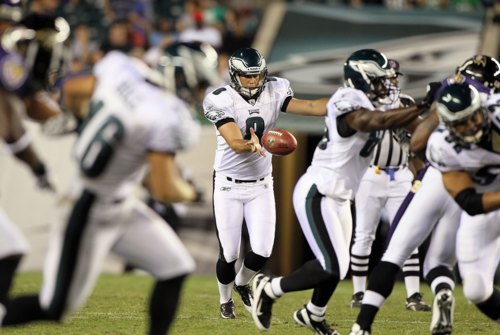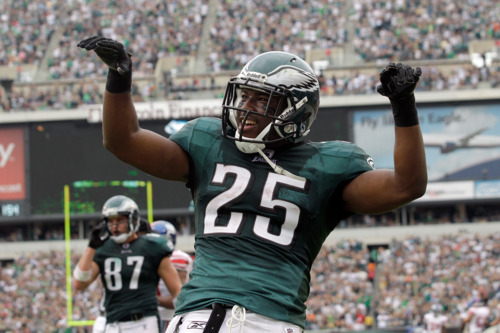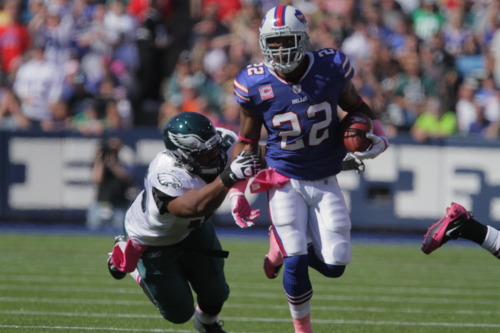
I’ve largely focused on the Eagles defense thus far this season. That’s where most of the problems have been. But re-watching the Redskins game last night I came to see a major offensive issue that needs to be addressed over the bye week.
Michael Vick is many things, but he’s not a particularly tall quarterback. In fact, he’s one of the smallest quarterbacks in the league. At only six feet, Vick is no taller than commonly-cited small QBs like Drew Brees and Colt McCoy. This height disadvantage isn’t such a big deal, except in certain circumstances.
Last Sunday the Redskins exploited those situations by bringing all-out blitzes with zero coverage on many third down, fourth down, and red zone plays. Such a defense leaves man-to-man coverage on outside, without any help deep or over the middle. By bringing more blitzers than the offense can hope to stop, the defense tries to force the quarterback to throw too quickly.
The key to beating zero coverage is to burn the defense over the middle with a quick slant or similar route. But on Sunday Vick was unable to complete those passes.
Part of that may be due to his smaller stature. With rushers coming right up the middle into his face, Vick has to see around them and throw accurately over the top. Other than during the first fourth down conversion, Vick failed to do so.
Whether due to his height or something else, Vick generally has trouble throwing to the center of the field. While Donovan McNabb and Kevin Kolb were more accurate throwing over the middle, Vick is the opposite. That accounts for some of Brent Celek’s decline, but is mostly offset by Vick’s stellar production throwing to his speedy receivers outside the hash marks. Unfortunately, there are some situations where quick, over-the-middle accuracy is what’s needed most.
Those times are mostly blitzes, when Vick has been consistently worse when than other top quarterbacks. Look at Aaron Rodgers’s or Tom Brady’s numbers versus the blitz and you see that their QB rating actually gets improves. Obviously those are the elite players in the game, but it shows what it takes to be that good. Guys like Rodgers, Brady, Peyton Manning, and Drew Brees at worst show minor decline when the defense brings extra rushers.
Vick may be one of the best quarterbacks in other areas, but versus the blitz he just hasn’t shown that kind of ability. And until he improves and/or Marty Morhinweg can scheme around this type of pressure, defenses are going to continue to attack.
Photo from Getty.






